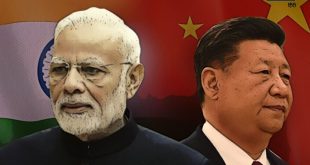India wants China to recommit itself to the 1993-1996 peace and tranquillity accords. It wants all military structures that have come up post May 2020 crisis along the Ladakh to be dismantled by the PLA so that permanent peace is restored pending boundary resolution.
While all eyes are on a possible brief unscheduled interaction or a courteous handshake between Prime Minister Narendra Modi and Chinese President Xi Jinping at Samarkand SCO Summit today, New Delhi wants Beijing to recommit to the 1993/1996 peace and tranquillity accords so that May 2020 LAC flare-up in East Ladakh is not repeated.
The disengagement from patrolling point 15 in Khugrang nullah, a tributary of Chang Chenmo river, is a step towards avoiding an accidental flare-up between Indian and Chinese army due to the close proximity of rival armies around this point.
External Affairs Minister S Jaishankar characterised the PP 15 disengagement as a “one problem less” with belligerent PLA but the move is significant as PP 15 is mere seven kilometres away from PP 17 A or Gogra and 40 km away from Hot Springs on the banks of Chang Chenmo river, in turn a tributary of Shyok River. Due to concentration of troops in the area, the possibility of an accidental flare-up was high and hence the disengagement is a forward movement towards peace.
However, India is keen that permanent peace and tranquillity is restored all along the 3488 km LAC and for that the PLA must dismantle all the military infrastructure that was put up all along the 1597 km long Ladakh LAC post May 2020 PLA belligerence in Pangong Tso, Galwan, Gogra-Hot Springs. India also wants its right to patrol Depsang Plains and Charding Nullah Junction (CNJ) to be recognized in the disputed area of the LAC. In both the above places, the PLA uses heavy vehicles to block Indian Army from patrolling the Plains as well as CNJ area in Demchok. “In both these places, it is question of patrolling rights to be recognised and not disengagement of troops,” said a former foreign secretary.
Beijing watchers say that restoration of peace and tranquillity on the LAC is going to be a hard slog for India as PLA would not like to give up their dominant positions on the LAC unless the instructions come from the President Xi Jinping himself, who is also the chairman of the central military commission.
In Samarkand, PM Modi and President Xi will come face to face for the first time after May 2020 crisis. In July 2017, the two leaders sorted out the Doklam crisis on India-Bhutan-Tibet tri-junction during an informal interaction on the side-lines of the G 20 summit at Hamburg. Will history repeat again at Samarkand? The chances are low but stakes are very high.





































